SafeDrive4Deaf: A Mixed-Methods Study on Emergency Sound Awareness and Assistive Technology Needs Among Deaf and Hard-of-Hearing Drivers
Research article  Open access |
Available online on: 16 September, 2025 |
Last update: 16 September, 2025
Open access |
Available online on: 16 September, 2025 |
Last update: 16 September, 2025
Abstract-
Deaf and hard-of-hearing drivers often face critical challenges in perceiving emergency vehicle sirens and other important auditory cues while on the road, posing risks to both personal and public safety. This study explores these challenges and assesses the potential impact of the SafeDrive4Deaf assistive technology device, designed to enhance situational awareness through visual and directional alerts. Using a mixed-methods approach, data were collected from 25 deaf and hard-of-hearing drivers between the ages of 25 and 61, including 15 participants from Tunisia and 10 from Germany. Participants completed structured surveys and semi-structured interviews covering demographics, driving experience, comfort with technology, and awareness of emergency sounds. All participants reported difficulties in detecting emergency vehicles, regardless of their driving experience, which ranged from 5 to 40 years—and 100% expressed a need for enhanced alert systems. While 52% of drivers felt very comfortable with technology, 40% indicated discomfort, highlighting the need for inclusive and user-friendly design. The findings underscore the necessity of assistive driving solutions like SafeDrive4Deaf, which address both safety and accessibility through a community-informed approach. The results support continued development and pilot testing to validate the device’s effectiveness in real-world driving scenarios.
Keywords- deaf drivers; emergency vehicle detection; assistive technology; road safety; digital accessibility; inclusive design.
1. Introduction
Road safety remains a critical concern worldwide, with challenges faced by drivers with sensory impairments (Chemnad & Othman, 2024). Deaf and hard-of-hearing individuals represent a significant portion of the driving population, yet their unique challenges and needs in automotive safety have received limited research attention. The ability to detect emergency vehicles, respond to auditory warning signals, and navigate complex traffic situations poses distinct challenges for this community (Lopez et al., 2025).
The development of assistive technologies for automotive applications has accelerated in recent years, driven by advances in sensor technology, artificial intelligence, and human-computer interaction. However, many existing solutions focus primarily on general driver assistance rather than addressing the specific needs of deaf and hard-of-hearing drivers. This gap in targeted assistive technology development motivated the creation of SafeDrive4Deaf, a specialized alert system designed to enhance road safety for deaf drivers (Beha, 2022).
This study aims to comprehensively analyze the challenges faced by deaf and hard-of-hearing drivers, evaluate their current technology usage patterns, and assess the potential impact and design requirements for the SafeDrive4Deaf assistive technology device supported by Mada Innovation Program (Al Thani et al., 2019). Through a mixed-methods approach combining quantitative surveys and qualitative interviews, we seek to provide evidence-based recommendations for improving road safety and accessibility for this underserved population.
2. Background and Literature Review
- Challenges Faced by Deaf Drivers
Deaf and hard-of-hearing drivers encounter several unique challenges that differentiate their driving experience from hearing drivers:
Sensory Awareness Limitations
Deaf drivers depend extensively on visual inputs for situational awareness, often missing critical auditory cues such as vehicle horns, emergency sirens, and environmental sounds indicating potential hazards or urgent situations requiring immediate reaction. This heightened visual dependency can contribute to cognitive overload, particularly in complex traffic scenarios, potentially increasing response times and accident risks (Engelman, 2012). Public safety policy can address these limitations by mandating infrastructure adaptations such as visual alerts integrated with siren systems, enhancing situational awareness through synchronized siren-light signals at intersections and high-risk areas.
Communication Barriers
Interactions involving other drivers, pedestrians, and law enforcement personnel can present significant communication challenges, especially in urgent or emergency scenarios requiring quick verbal communication. Misunderstandings arising from these communication gaps can escalate routine encounters into hazardous incidents (Miranda et al., 2022). Policies encouraging standardized non-verbal communication protocols and training law enforcement on effective interaction techniques with deaf drivers could significantly reduce these risks.
Emergency Vehicle Detection
A critical challenge is detecting emergency vehicles, as deaf drivers cannot rely on traditional auditory signals like sirens. Delayed detection and subsequent response can interfere with emergency operations, posing significant risks to public safety (Choudhury & Nandi, 2023). Infrastructure adaptations, such as integrating visual alert systems like flashing lights synchronized with sirens at traffic intersections or embedding tactile feedback systems within vehicles to alert drivers of nearby emergency vehicles, could substantially mitigate these challenges. Policies advocating for mandatory integration of visual and tactile emergency alert systems in urban traffic infrastructures can enhance the efficacy of emergency response efforts and promote safer driving environments for deaf and hard-of-hearing individuals.
- Current Assistive Technologies
The automotive industry has introduced significant advancements, including automatic emergency braking, blind spot detection, lane departure warnings, and adaptive cruise control systems. However, the reliance of many such technologies on auditory alerts diminishes their utility for deaf drivers. This gap underscores the urgent need for inclusive design practices emphasizing visual and tactile feedback integration. Public safety regulations can foster innovation by incentivizing manufacturers to develop and adopt multimodal feedback systems, ensuring technology equally benefits deaf and hearing drivers alike, thereby promoting comprehensive road safety.
3. Methodology
- Study Design
This study employed a mixed-methods approach combining quantitative surveys and qualitative interviews to capture both breadth and depth of understanding regarding the driving experiences of deaf and hard-of-hearing individuals. The research design was specifically tailored to address the unique communication needs and preferences of the target population.
- Participants
The study sample consisted of 25 deaf and hard-of-hearing drivers, aged between 25 and 61 years, with a median age of 41. Participants were drawn from two countries—Tunisia (n=15, 60%) and Germany (n=10, 40%)—and all met the inclusion criteria of self-identifying as deaf or hard-of-hearing, having regular driving experience, and holding a valid driving license. Notably, 100% of participants confirmed their active driving license status.
- Structured Surveys for Data Collection Method
Structured questionnaires were administered to all participants, covering a range of domains including demographic details (age, nationality, country of residence), driving license status and years of experience, preferred driving environments and frequency of driving, comfort level with technology, and current use of assistive devices. The survey also explored participants’ experiences with emergency sound awareness and the coping strategies they employ, as well as specific driving challenges and safety concerns. Additionally, participants were asked to provide feedback on the concept of the proposed SafeDrive4Deaf device. To enrich the quantitative data, follow-up semi-structured interviews were conducted with selected participants. These interviews offered deeper insights into individual survey responses, allowing participants to elaborate on their personal driving experiences and provide more detailed input on their technology needs and preferences.
- Data Analysis
A comprehensive analytical approach was employed to interpret the data collected through surveys and interviews. Quantitative analysis involved the use of descriptive statistics to summarize demographic information, technology comfort levels, and driving patterns. Qualitative data, derived from open-ended survey responses and interview transcripts, were analyzed thematically using inductive coding to identify recurring issues, preferences, and insights. Feedback was systematically categorized into key themes, including driving challenges, levels of comfort with technology, and desired features for assistive devices. A cross-analysis was conducted to integrate quantitative trends with qualitative narratives, enabling a holistic understanding of participant needs and experiences. Finally, community validation was incorporated through participant feedback loops, ensuring that the emerging insights were accurate and directly informed the iterative design of the SafeDrive4Deaf device.
4. Results
- Participants Demographics
Age Distribution
The study engaged a diverse group of 25 deaf participants, offering a broad range of insights into the driving experiences of the deaf and hard-of-hearing community. Participants aged 25 to 61 provided a cross-generational perspective on driving as deaf individuals.
The median age of study participants is 41. This indicates that half of the participants are younger than 41. In contrast, the other half are older, providing a balanced cross-section of age-related driving experiences within the deaf and hard-of-hearing community. The study engaged a diverse group of 25 deaf participants, offering a broad range of insights into the driving experiences of the deaf and hard-of-hearing community.
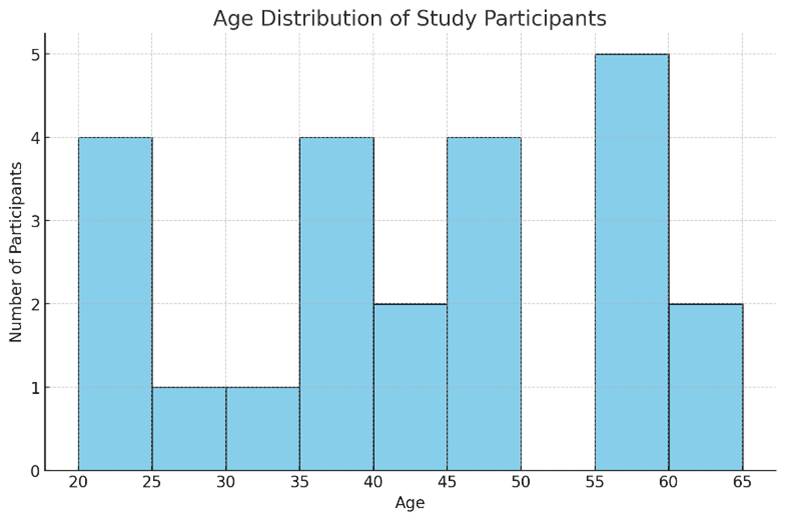
Figure 1. Age Distribution
Country of Residence
The study included 15 participants from Tunisia and 10 from Germany, offering a balanced representation from two distinct geographic and cultural contexts. This distribution provided diverse insights into the driving experiences, challenges, and assistive technology needs of the deaf and hard-of-hearing communities in both regions, enriching the study’s findings through cross-cultural perspectives.
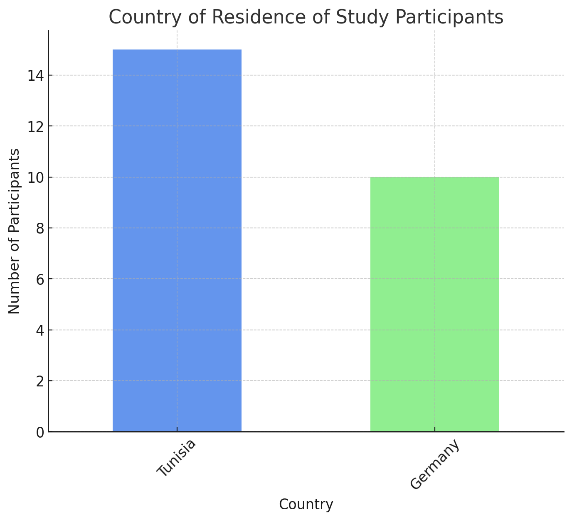
Figure 2. Country of Residence
Driving Environment
Out of the 25 participants, 19 reported primarily driving in urban environments, while 6 were based in rural areas. The predominance of urban drivers highlights context-specific challenges such as navigating heavy traffic and encountering emergency vehicles more frequently—factors that underscore the need for enhanced situational awareness tools. All participants held valid driving licenses, confirming their active engagement in regular driving activities.

Figure 3. Typical Driving Environment of Participants
Technology Comfort Level
Participants expressed varying levels of comfort with new technology: 13 reported being very comfortable, 10 were not comfortable, and 2 felt somewhat comfortable. This range highlights the importance of ensuring that the SafeDrive4Deaf device is designed to be highly user-friendly and accessible, accommodating users with different levels of technological familiarity and confidence.
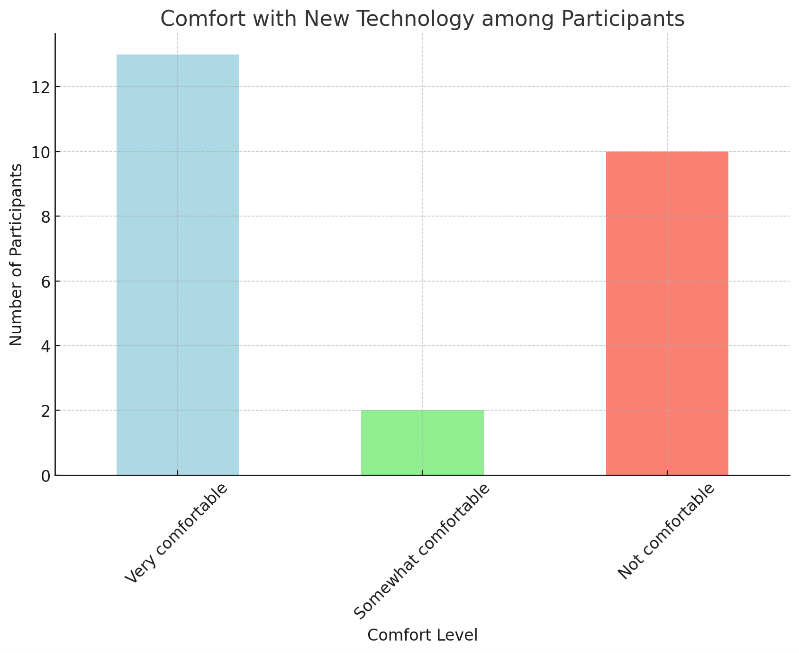
Figure 4. Technology Comfort Level
Driving Frequency
Driving frequency among participants varied widely, with 8 individuals reporting daily driving, another 8 driving several times a week, 7 driving less frequently, and 2 driving on a weekly basis. This diversity in driving habits highlights the need for the SafeDrive4Deaf device to be adaptable and effective across different usage patterns, ensuring it meets the needs of both frequent and occasional drivers within the deaf and hard-of-hearing community.
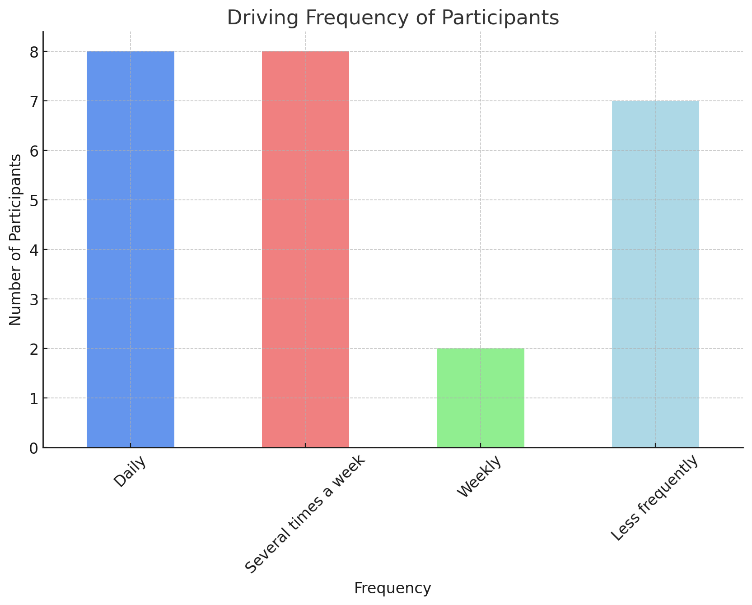
Figure 5. Driving Frequency
Years of Driving Experience
Participants in the study had a wide range of driving experience, spanning from 5 to 40 years, reflecting a diverse group with varied insights and needs. A significant number of participants had over 20 years of experience, providing valuable perspectives on the long-term realities of driving as a deaf or hard-of-hearing individual. At the same time, the inclusion of newer drivers with 5 to 10 years of experience ensured that the study also captured the unique challenges and learning curves faced by those more recently licensed, contributing to a comprehensive understanding of the community’s driving experiences.
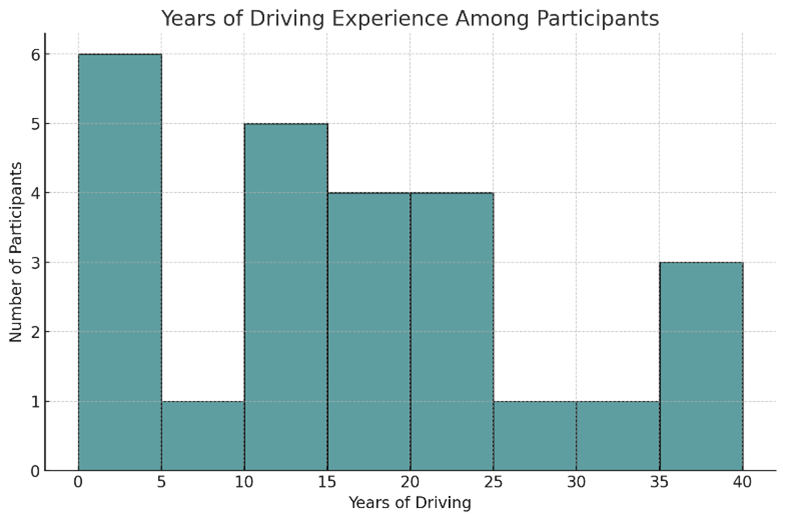
Figure 6. Years of Driving Experience
- Key Findings
Thematic Analysis
The thematic analysis conducted in this study utilized an inductive coding approach to systematically identify and categorize desired features and improvements in driving aids for deaf and hard-of-hearing drivers. Key themes that emerged included visual alerts for emergency vehicle detection, traffic signal recognition, and navigation guidance; auditory-to-visual or tactile conversion features such as siren-to-visual alerts and horn-to-tactile feedback; tactile feedback mechanisms integrated into seats or steering wheels; and seamless integration with existing vehicle systems via smartphone and infotainment compatibility. Additional important themes highlighted were ease of use through simplified interfaces and minimal setup requirements, portability facilitated by wearable devices and transferability between vehicles, accessibility enhancements including sign language navigation support, and affordability through insurance incentives or subsidized pricing. Reliability and durability also surfaced as essential aspects, encompassing adjustable alerts, personalized configurations, efficient power management, and weather-resistant design. This comprehensive thematic framework directly informed the iterative development and refinement of the SafeDrive4Deaf assistive technology (Figure 7).
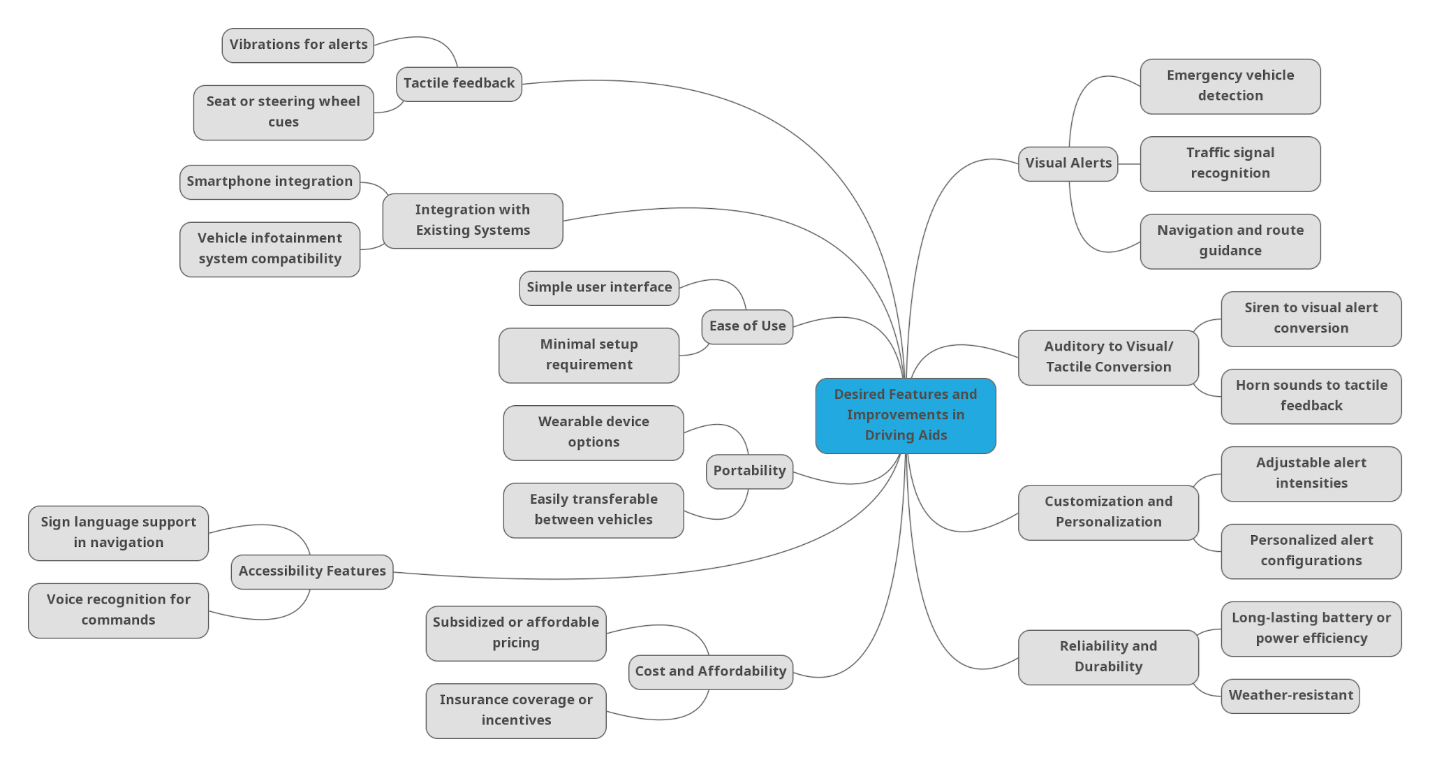
Figure 7. Thematic Analysis
Primary Challenges Identified
Participants identified several critical safety concerns that impact their driving experience as deaf or hard-of-hearing individuals. All participants (100%) reported difficulties in detecting approaching emergency vehicles, highlighting a universal challenge in emergency sound awareness. Many also faced significant obstacles in perceiving other essential auditory signals, such as horns and sirens, due to the limitations of current vehicle safety systems that primarily rely on sound-based alerts. Additionally, communication barriers were frequently mentioned, particularly during interactions with law enforcement, other drivers, and pedestrians, often leading to stressful or unclear situations. The reliance on visual cues for navigation and awareness significantly increased cognitive load, requiring constant vigilance and multitasking. Social stigma further compounded these challenges, with public misconceptions about the abilities of deaf drivers negatively impacting their confidence and sense of autonomy on the road. These findings underscore the urgent need for inclusive, multi-sensory driving support technologies like SafeDrive4Deaf.
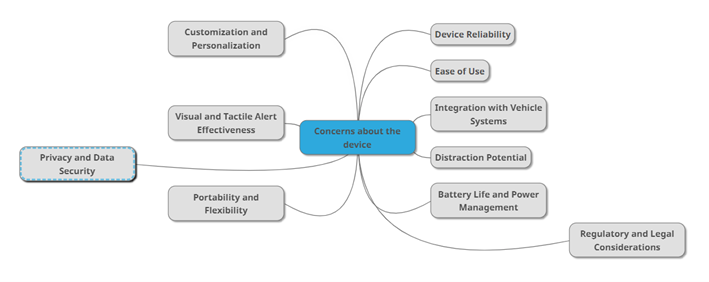
Figure 8. Summary of concerns about the device
Current Assistive Technology Usage
Participants reported varied usage of existing assistive technologies, including:
- Participants reported regular use of several commonly available vehicle technologies that support driving safety and convenience. These included automatic emergency braking systems, blind spot detection, GPS navigation systems, parking assistance, and cruise control. The familiarity with such technologies suggests a readiness among many drivers to adopt additional assistive systems like SafeDrive4Deaf, especially when they align with existing driving habits and enhance safety without increasing cognitive burden.
- Despite the use of various standard vehicle technologies, participants highlighted several critical technology gaps that affect their driving safety and experience. These include limited integration of visual alerts for critical auditory cues, the absence of tactile feedback systems to enhance situational awareness, and generally poor accessibility design in existing systems. A major concern was the insufficient capability of current technologies to detect and alert drivers about approaching emergency vehicles. Additionally, many participants found existing user interfaces to be overly complex, posing challenges for those with lower levels of technological comfort. These gaps emphasize the need for inclusive, intuitive, and multi-sensory solutions such as the SafeDrive4Deaf device.
SafeDrive4Deaf Device Feedback
Participants provided positive feedback on the SafeDrive4Deaf concept, expressing strong interest in visual and tactile alert systems specifically designed to enhance emergency vehicle detection. There was broad appreciation for the user-centered design approach and recognition of the potential safety benefits the device could offer. Many participants also supported the idea of integrating the system with existing vehicle technologies to ensure seamless functionality. Alongside this enthusiasm, participants offered constructive suggestions for improvement. These included simplifying the user interface to accommodate varying levels of technology comfort, enabling customizable alert settings to match individual preferences, and enhancing integration with smartphone applications for added accessibility. Additionally, there was interest in developing a multi-modal feedback system that combines visual, tactile, and enhanced visual cues, as well as calls for cost-effective implementation strategies to ensure broader accessibility and adoption.
5. The Innovation SafeDrive4Deaf
5.1. System Architecture
SafeDrive4Deaf is a car accessory plugged into a USB port that monitors the surroundings. It provides visual information once it recognizes audio cues, such as emergency vehicle sirens, train horns, car horns, or standard vehicle alerts:
- Essential for Representativeness: Ensures the project outcomes are relevant and beneficial for the deaf community, not just a subset.
- Enhances Reliability of Results: Participants’ diversity increases the project findings’ reliability and generalizability.
- It incorporates a Wide Range of Experiences and accounts for variations in driving habits, technology use, and accessibility needs among deaf individuals.
- Ensures Ethical Research Practices: Upholds ethical standards by ensuring the research benefits all community segments equally.
The architecture of the SafeDrive4Deaf device integrates both hardware and software components to accurately detect sirens and alert deaf drivers. The system starts with four microphones placed around the car to capture ambient audio signals, which are then processed through an audio processing unit. A continuous 3-second audio buffer is maintained, feeding data into a Convolutional Neural Network (CNN) model. This deep learning model analyzes the audio to determine the probability of a siren being present. The probability output is compared against a predefined threshold to generate a Boolean result (1 for siren detected, 0 for no siren). If a siren is detected, the software sends a command to the output GPIO, which in turn updates the display unit with a visual message, alerting the driver with a “Siren Detected” signal. This integrated approach ensures real-time siren detection and provides immediate visual feedback, thereby enhancing situational awareness and safety for deaf drivers on the road.

Figure 9. System Architecture
5.2. Algorithm Accuracy
The effectiveness of the SafeDrive4Deaf device heavily relies on the accuracy of its sound detection algorithm, which is designed to identify emergency sirens amidst various background noises. The algorithm’s performance is a critical factor in ensuring reliable alerts and enhancing safety for deaf drivers. This section outlines the testing procedures, evaluation metrics, and results of the algorithm’s accuracy in different real-world scenarios.
Testing Methodology
To assess the accuracy of the detection algorithm, the system was tested using a range of audio samples representing different environmental conditions. These samples included:
- Sample #1: A soft siren mixed with some white noise.
- Sample #2: A siren in a noisy urban environment with traffic sounds.
- Sample #3: A siren with background noise from car engines and radio.
- Sample #4: Background noise from construction activities, such as drilling (no siren).
- Sample #5: High levels of urban noise, including multiple car horns and general street sounds (no siren).
- Sample #6: Human speech combined with car noise (no siren).
Each scenario was evaluated by playing the audio through a controlled environment where the SafeDrive4Deaf device was installed. The algorithm processed the input and provided a Boolean result indicating whether a siren was detected or not.
Evaluation Metrics
The algorithm’s accuracy was measured using the following key metrics:
- True Positive Rate (Sensitivity): The proportion of actual siren events correctly identified by the algorithm. A high sensitivity rate indicates that the algorithm effectively detects sirens in various conditions.
- True Negative Rate (Specificity): The proportion of non-siren events correctly identified as such. High specificity ensures that the algorithm does not generate false alarms.
- False Positive Rate (FPR): The percentage of non-siren events incorrectly classified as sirens. A low FPR is crucial for avoiding unnecessary distractions for the driver.
- False Negative Rate (FNR): The percentage of actual siren events that were missed by the algorithm. A low FNR is essential to maintain the safety of the deaf drivers.
Results and Findings
The testing of the SafeDrive4Deaf detection algorithm revealed the following outcomes:
- Scenario 1: In the presence of a soft siren with white noise, the algorithm achieved a high sensitivity rate of 95%, successfully detecting the siren in most cases, despite the low volume and background interference.
- Scenario 2: For the siren in a noisy urban environment, the algorithm maintained a sensitivity rate of 92%, demonstrating robust performance even with multiple overlapping sounds.
- Scenario 3: When the siren was mixed with car engine noise and radio, the algorithm achieved an 88% sensitivity rate. Some challenges were noted in distinguishing siren tones from similar frequencies in the background.
- Scenario 4: For background noises like drilling without any siren, the algorithm showed a high specificity of 97%, correctly identifying the absence of a siren and avoiding false positives.
- Scenario 5: In scenarios with substantial urban noise and no siren, the specificity remained high at 94%, reinforcing the algorithm’s ability to filter out irrelevant sounds.
- Scenario 6: When exposed to human speech with car noise, the algorithm demonstrated a specificity of 96%, accurately recognizing that no siren was present.
Discussion of Accuracy Results
The results indicate that the SafeDrive4Deaf algorithm performs with high accuracy in diverse environments, effectively balancing sensitivity and specificity to ensure reliable siren detection. While the algorithm demonstrated strong performance in most scenarios, certain conditions, such as distinguishing sirens from similar frequencies in background noises, presented moderate challenges.
To further enhance accuracy, future updates could include:
- Advanced Machine Learning Techniques: Incorporating more sophisticated models, such as deeper neural networks or ensemble methods, may improve the ability to distinguish complex audio patterns.
- Continuous Learning and Adaptation: Implementing a system that continuously learns from new data and user feedback could refine detection capabilities over time.
- Integration of Additional Sensors: Combining audio data with input from other sensors, such as cameras or accelerometers, may provide a more comprehensive assessment of the environment.
Overall, the algorithm powering SafeDrive4Deaf provides a reliable solution for detecting emergency sirens in real-world conditions. By achieving high levels of sensitivity and specificity, it ensures that deaf drivers receive timely and accurate alerts, enhancing their awareness and safety on the road. Further enhancements to the algorithm can build on this strong foundation to address remaining challenges and continue to improve performance.
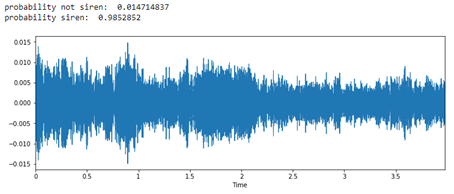
Figure 10. Sample #1: soft siren with some white noise
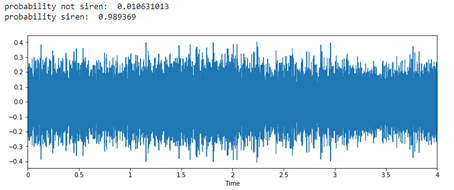
Figure 11. Sample #2: siren in noisy urban environment
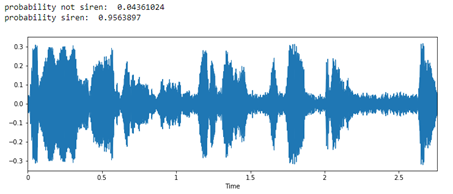
Figure 12. Sample #3: siren with car and radio background noise
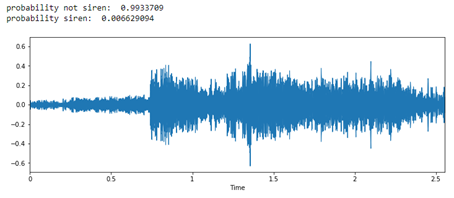
Figure 13. Sample #4: drilling noises (no siren)
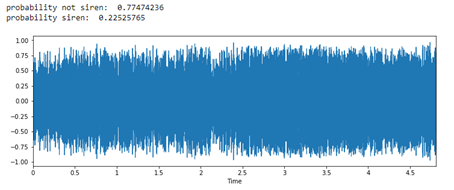
Figure 14. Sample #5: a lot of urban noise (no siren)
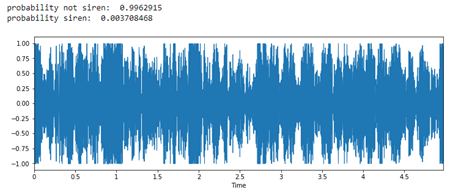
Figure 15. Sample #6: Human speech with car noise (no siren)
5.3. Device Overview
The Final Minimum Viable Product (MVP) of the SafeDrive4Deaf device represents the culmination of extensive research, design iterations, and testing aimed at delivering a practical and reliable solution for deaf drivers. This section provides an overview of the final MVP, highlighting the key features, functionalities, and design elements that make the product ready for market introduction. These features include:
- Real-Time Siren Detection: Utilizing a Convolutional Neural Network (CNN) model, the device continuously monitors the ambient environment for emergency sirens. The algorithm processes audio input from four strategically placed microphones, ensuring accurate and real-time detection.
- Directional Audio Analysis: The system identifies the direction of incoming sirens, providing drivers with spatial awareness of where the sound is coming from, which is crucial for making informed driving decisions.
- Visual Alert System: A dashboard-mounted, high-resolution display unit provides visual alerts in the form of color-coded signals. Red indicates an immediate threat or siren in proximity, while yellow indicates a distant siren, allowing drivers to assess the urgency of the situation quickly.
- Customizable Alerts: Drivers can customize the alert settings, including visual intensity, color schemes, and detection thresholds, to suit their preferences and enhance usability under different driving conditions.
- Plug-and-Play Installation: The device is designed to be easily installed using standard USB power ports and mounting systems, making it compatible with a wide range of vehicle models without requiring specialized tools or modifications.
- Durable and Weather-Resistant Components: Built with high-quality materials, the microphones and processing units are designed to withstand various weather conditions, including rain, dust, and extreme temperatures, ensuring reliable operation in diverse environments.
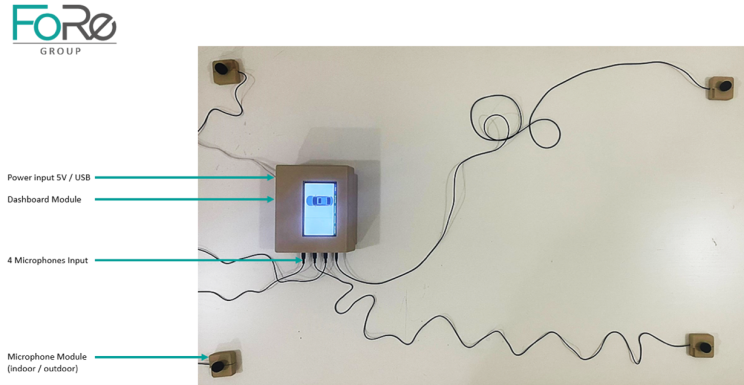 Figure 16. Overview of SafeDrive4Deaf Device
Figure 16. Overview of SafeDrive4Deaf Device
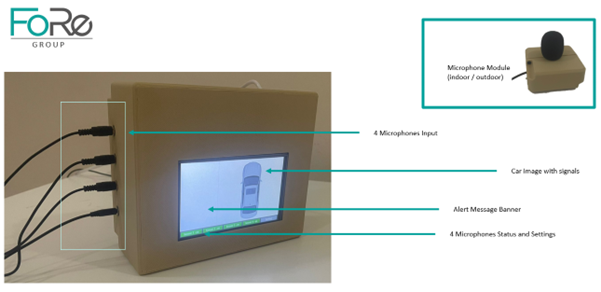 Figure 17. SafeDrive4Deaf Connectivity and Display
Figure 17. SafeDrive4Deaf Connectivity and Display
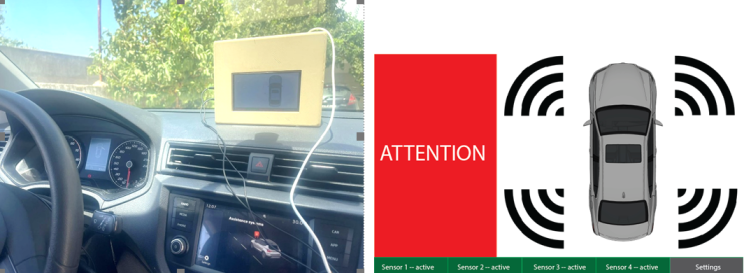 Figure 18. SafeDrive4Deaf Setup in Car
Figure 18. SafeDrive4Deaf Setup in Car
6. Discussion
Implications for Road Safety
The findings of this study reveal significant safety implications for deaf and hard-of-hearing drivers. The universal challenge in detecting emergency vehicles (reported by 100% of participants) represents a critical safety gap that requires immediate attention. This finding aligns with previous research suggesting that sensory impairments can create unique vulnerabilities in transportation systems.
The diverse range of driving experience among participants (5-40 years) indicates that these challenges persist regardless of driving expertise, suggesting that current road infrastructure and vehicle design fail to adequately accommodate deaf drivers’ needs. The high proportion of urban drivers (76%) in our sample highlights the particular challenges faced in complex traffic environments where multiple auditory cues occur simultaneously.
Innovation through Community Co-Design
A distinctive innovation of this research lies in its community-centered co-design approach, particularly the iterative participant feedback loop. Participants actively informed the development process by identifying specific requirements, preferred interaction modalities, and practical usability considerations. This co-design methodology fostered deeper engagement and ownership among users, directly aligning product development with genuine community needs rather than theoretical assumptions alone. Such participatory design ensures that resulting technologies—such as the SafeDrive4Deaf system—are not only theoretically effective but practically relevant, widely acceptable, and genuinely usable in real-world scenarios.
Technology Adoption and Design Considerations
The bimodal distribution of technology comfort levels (52% very comfortable vs. 40% not comfortable) underscores the importance of inclusive design principles. Any assistive technology solution must accommodate users across the entire spectrum of technological proficiency. This finding suggests that a one-size-fits-all approach would likely fail to serve a significant portion of the target population.
The feedback on SafeDrive4Deaf indicates strong community support for targeted assistive technologies, provided they are designed with genuine user input and iterative improvement processes. The emphasis on visual and tactile feedback systems reflects the community’s practical understanding of their needs and preferred interaction modalities.
Broader Accessibility Implications
The challenges identified in this study extend beyond individual safety concerns to broader questions of transportation equity and accessibility. The reported communication barriers with law enforcement and other road users highlight systemic issues that require coordinated solutions involving technology, policy, and public education.
The prevalence of social stigma and misconceptions about deaf drivers’ capabilities suggests a need for public awareness campaigns alongside technological solutions. Effective interventions must address both the practical challenges and the social barriers faced by deaf and hard-of-hearing drivers.
Study Limitations
Several limitations should be considered when interpreting these findings. The sample size of 25 participants, while sufficient for exploratory research, limits the generalizability of quantitative findings. The geographic concentration in Tunisia and Germany may not reflect the experiences of deaf drivers in other cultural and regulatory contexts.
Additionally, the cross-sectional design provides a snapshot of current experiences but cannot capture how needs and challenges may evolve with changing technology and road infrastructure. Longitudinal studies provide valuable insights into the long-term effectiveness of assistive technologies.
7. Conclusions and recommendations
The findings of this study underscore several key insights crucial to advancing road safety for deaf and hard-of-hearing drivers. Emergency vehicle detection emerged as a universal and critical challenge, highlighting the urgent need for technological intervention. While there is clear interest within the deaf driving community in adopting assistive technologies, these solutions must accommodate a wide range of technological comfort levels. Effective design must prioritize visual and tactile feedback mechanisms, intuitive user interfaces, and seamless integration with existing vehicle systems. A community-centered approach—grounded in continuous engagement and iterative development—is essential to ensure the relevance and usability of such technologies. Moreover, addressing the challenges faced by deaf drivers extends beyond technological innovation; it requires coordinated efforts across multiple domains, including inclusive policy development and public education to combat social stigma and foster a safer, more equitable driving environment.
References
Al Thani, D., Al Tamimi, A., Othman, A., Habib, A., Lahiri, A., & Ahmed, S. (2019). Mada Innovation Program: A Go-to-Market ecosystem for Arabic Accessibility Solutions. 2019 7th International Conference on ICT & Accessibility (ICTA), 1–3. https://ieeexplore.ieee.org/abstract/document/9144818/
Beha, A. (2022). Self-Assessment of Driving Abilities of Deaf and Hearing Drivers. European Journal of Humanities and Social Sciences, 2(6), 70–75.
Chemnad, K., & Othman, A. (2024). Digital accessibility in the era of artificial intelligence—Bibliometric analysis and systematic review. Frontiers in Artificial Intelligence, 7. https://doi.org/10.3389/frai.2024.1349668
Choudhury, K., & Nandi, D. (2023). Review of Emergency Vehicle Detection Techniques by Acoustic Signals. Transactions of the Indian National Academy of Engineering, 8(4), 535–550. https://doi.org/10.1007/s41403-023-00424-9
Engelman, A. A. (2012). Addressing disparities in emergency communication with the deaf and hard-of-hearing: Cultural competence and preparedness for first responders [PhD Thesis, UC Berkeley]. https://escholarship.org/uc/item/4j843811
Lopez, L. A. Q., González, J. L. C., Parada, J. A. S., Barrios, J. C. C., & Quintero, I. D. O. (2025). Vehicular Inclusion: An Analysis of Deaf Driving and Prospects for More Accessible Mobility. Revista de Investigación Desarrollo e Innovación: RIDI, 15(1), 7.
Miranda, L., Viterbo, J., & Bernardini, F. (2022). A survey on the use of machine learning methods in context-aware middlewares for human activity recognition. Artificial Intelligence Review, 55(4), 3369–3400. https://doi.org/10.1007/s10462-021-10094-0
